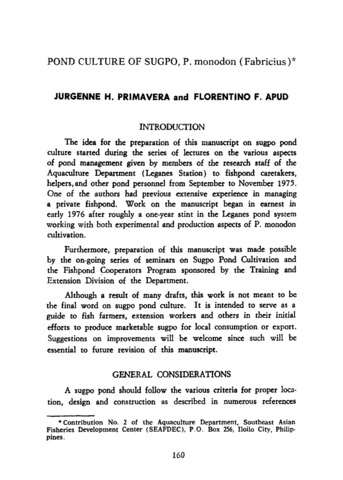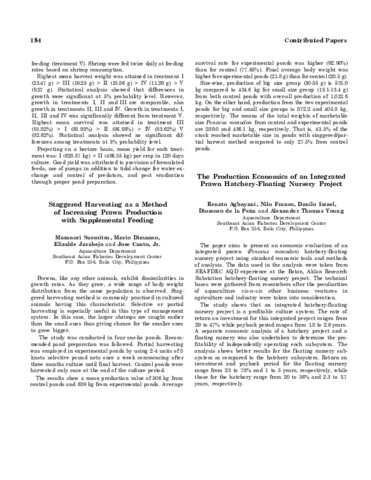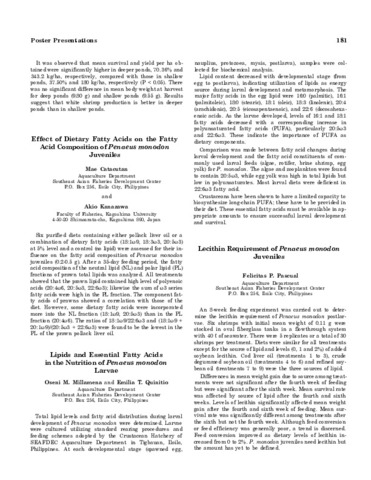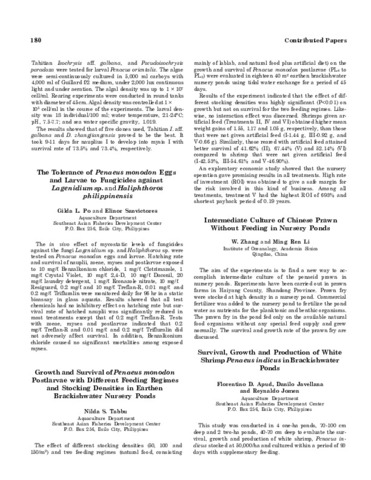Pond culture of sugpo, P. monodon (Fabricius)
- Global styles
- MLA
- Vancouver
- Elsevier - Harvard
- APA
- Help

View/
Date
1976Page views
4,770ASFA keyword
AGROVOC keyword
Taxonomic term
Metadata
Show full item record
Share
Abstract
A resume is presented of the practical considerations involved in establishing a sugpo pond culture operation, as a guide to fish farmers, extension workers and others interested in producing marketable sugpo in the Philippines. In addition to outlining the general biology of P.monodon , information is given for pond preparation, stocking, transfer from nursery pond to rearing pond, rearing, harvesting, processing and transport. A large appendix deals with the control of pests, predators and diseases, fertilisation and supplementary feeding, and incorporates an illustrated manual of operations.
Suggested Citation
Primavera, J., & Apud, F. D. (1976). Pond culture of sugpo, P. monodon (Fabricius). The Philippine Journal of Fisheries , 14(2), 160-190. http://hdl.handle.net/10862/1071
Type
ArticleISSN
0048-377XCollections
- Journal Articles [1258]
Related items
Showing items related by title, author, creator and subject.
-
Staggered harvesting as a method of increasing prawn production with supplemental feeding
Suemitsu, M.; Dimaano, M.; Jarabejo, E.; Canto, J. Jr. (Aquaculture Department, Southeast Asian Fisheries Development Center, 1985)Prawns, like any other animals, exhibit dissimilarities in growth rates. As they grow, a wide range of body weight distribution from the same population is observed. Staggered harvesting method is commonly practised in ... -
Lipids and essential fatty acids in the nutrition of Penaeus monodon larvae
Millamena, O.M.; Quinitio, E.T. (Aquaculture Department, Southeast Asian Fisheries Development Center, 1985)Total lipid levels and fatty acid distribution during larval development of Penaeus monodon were determined. Larvae were cultured utilizing standard rearing procedures and feeding schemes adopted by the Crustacean Hatchery ... -
The tolerance of Penaeus monodon eggs and larvae to fungicides against Lagenidium sp. and Haliphthoros philippinensis
Po, G.L.; Sanvictores, E. (Aquaculture Department, Southeast Asian Fisheries Development Center, 1985)The in vivo effect of mycostatic levels of fungicides against the fungi Lagenidium sp. and Haliphthoros sp. were tested on Penaeus monodon eggs and larvae. Hatching rate and survival of nauplii, zoeae, myses and postlarvae ...






